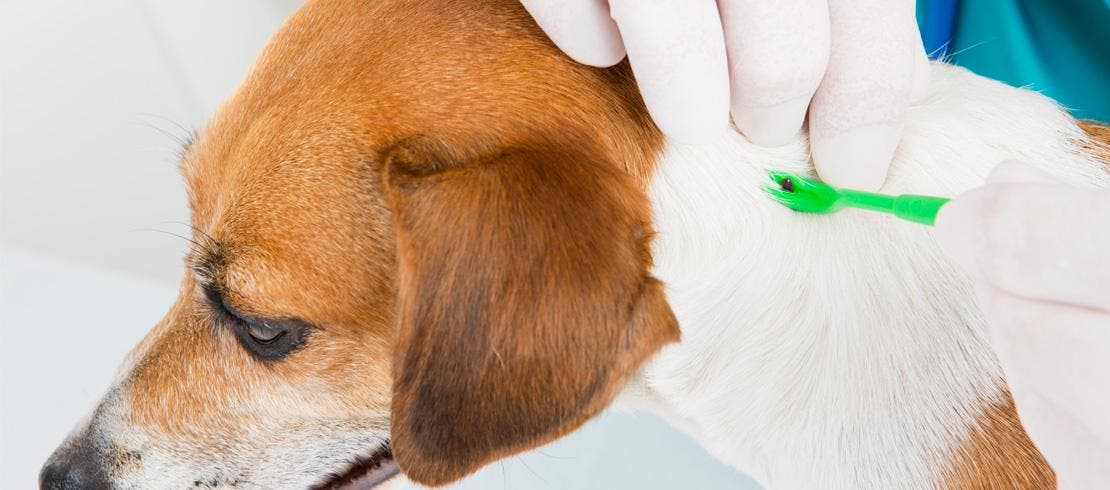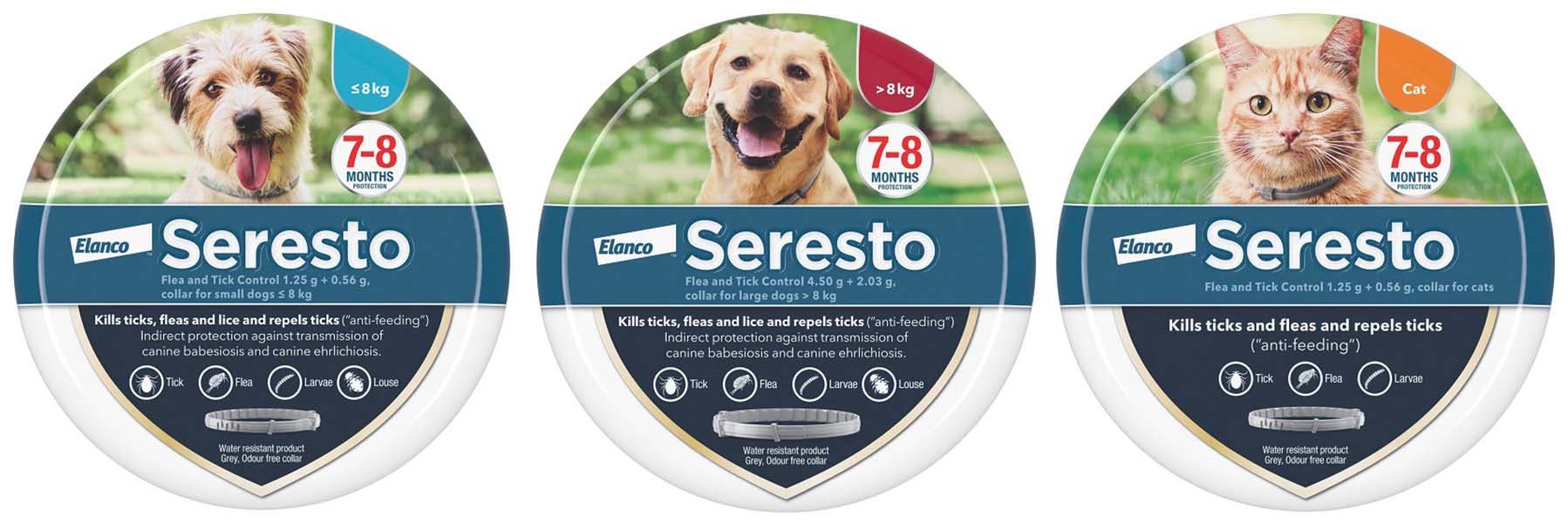Removing a tick isn’t always easy to do. If you’ve followed our step-by-step guide to twisting out a tick but your dog or cat has been left with the tick head stuck in them, you need to know what to do. It is always advisable to speak to your vet, they may ask you to bring your cat or dog to the practice to be checked-over.
How dangerous to my cat or dog’s health is a stuck tick part?
If after tick removal its head or mouthparts are left behind, don’t panic. You’ve killed the tick and removed its body, preventing any serious risk of disease transmission. But any residual parts can still lead to infection at the site of attachment.
Find out what you need to do to tackle a stubborn tick once and for all.
What to do if a tick head is stuck in your pet
Every situation is different. If your cat or dog is running around with part of a tick inside them, they may not even realise it, but it is always advisable to speak to your vet; in some cases, you may need to take action to prevent infection.
- Disinfect the area - In situations when part of the tick is stuck in your pet, it's important to clean the area by wiping with salt water and monitoring your pet so you can take action when necessary. It’s important not to treat the area with alcohol or disinfectant if the tick is still attached, as this can increase the risk of disease transmission.
- Visit your vet - In cases where the affected area has become red, swollen or painful, or has a draining sore, it’s time to book an appointment with the vet right away.
Your vet will be able to advise you on the best course of action, depending on whether the remnants of the tick are causing harm to your pet.
If the affected area has already become infected, your vet may prescribe a topical antibiotic or a course of oral antibiotics to help treat it.

What NOT to do if a tick head is stuck in your pet
There are various well-known home methods of removing ticks, which do not use a tick hook and are not recommended, even when parts of the tick are left in your dog or cat.
- Don’t attempt to extract it yourself - If you think you might be able to remove the tick head or mouthparts yourself with a few attempts using your tweezers – stop right there. This could exacerbate the situation and increase the risk of a skin infection.
- Don’t use petroleum jelly or nail varnish remover - The belief that applying petroleum jelly or nail varnish to the tick will help to remove it is wrong. Doing this will simply irritate your pet’s skin even more.
- Never burn a tick off - You shouldn’t let a naked flame go anywhere near your pet. Trying to attack mouthparts embedded in the skin using a flame won’t work. It will only lead to you burning your poor cat or dog.
Signs a tick has infected your pet
In some cases, the stuck part of the tick may be so small you don’t even realise there’s a problem until your dog or cat’s skin starts to react. Once you’ve unhooked a tick, it is important to check that the whole tick has been removed; look for the head, mouthparts and legs attached to the tick’s body to be confident you have removed the whole tick and not left anything behind. Keep an eye out for swelling, redness or irritation in the attachment area for a little while afterwards in case of infection. If you spot any issues, contact your vet right away.
Although uncommon, your pet may even display signs of a more serious tick-borne infection, such as Lyme disease. Transmission of the disease Babesiosis is another risk from ticks, although this is rare in the UK.
You should take your dog to the vet if they are displaying any of the following symptoms, as they may have contracted Lyme disease:
- lost appetite
- lethargy
- stiff or sore joints
Find out more about tick-borne diseases your pet is at risk of.
How to avoid tick heads stuck in your pet going forward
It’s not uncommon for pet owners to find tick removal difficult because once ticks have begun feeding, they’re locked on until they finish, which can take days. Because of this, it’s recommended owners use a tick hook to remove these parasites, which are designed to extract them whole without leaving its head or mouthparts behind.
Take a look at our step-by-step guide on how to remove a tick for more information on proper tick removal.

Prevent ticks biting to protect your pet’s health
Tick bites are uncomfortable and they can carry diseases that make your pet seriously unwell. Plus, they pose a risk to human health as infected ticks can even spread Lyme disease to people.
Protect your pet and your household from tick-borne diseases with an effective preventative product that repels and kills ticks.
Seresto Flea and Tick Control collar is an easy way to repel and kill ticks before they bite your pet*, while also killing fleas too. Available for both dogs and cats, the collars are worn just like a normal collar and are clinically proven to provide 7-8 months protection, meaning you don't need to remember month flea and tick applications
*Mehlhorn et al. Parasitol Res (2001) 87:198-207, information is regarding mode of action and is not intended to relate to speed of kill or to imply parasites can be completely stopped from biting

